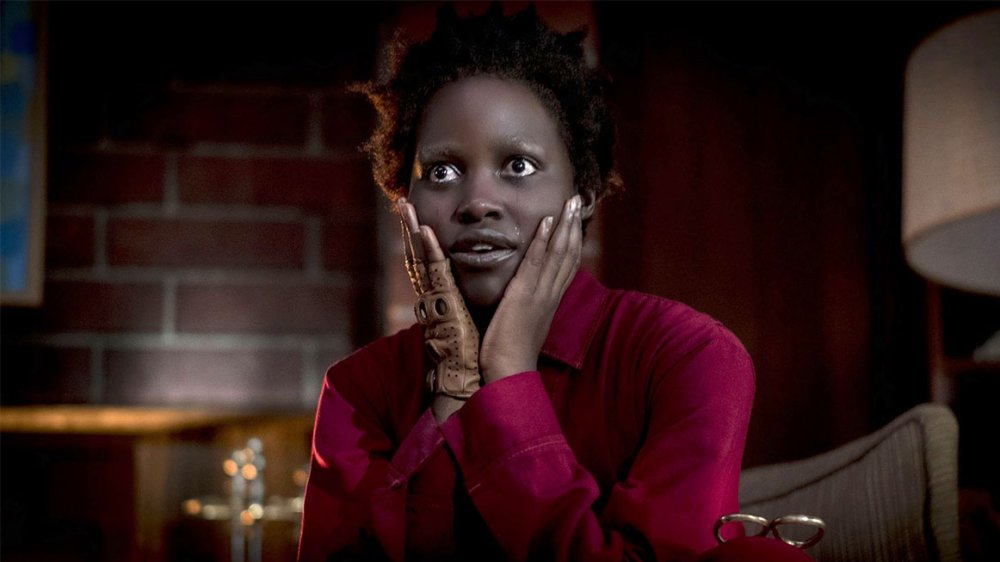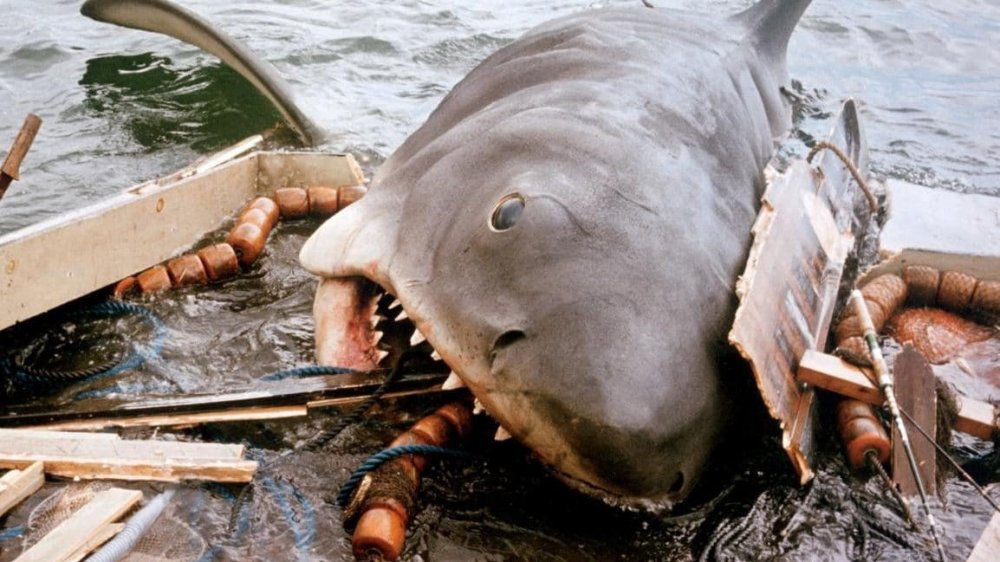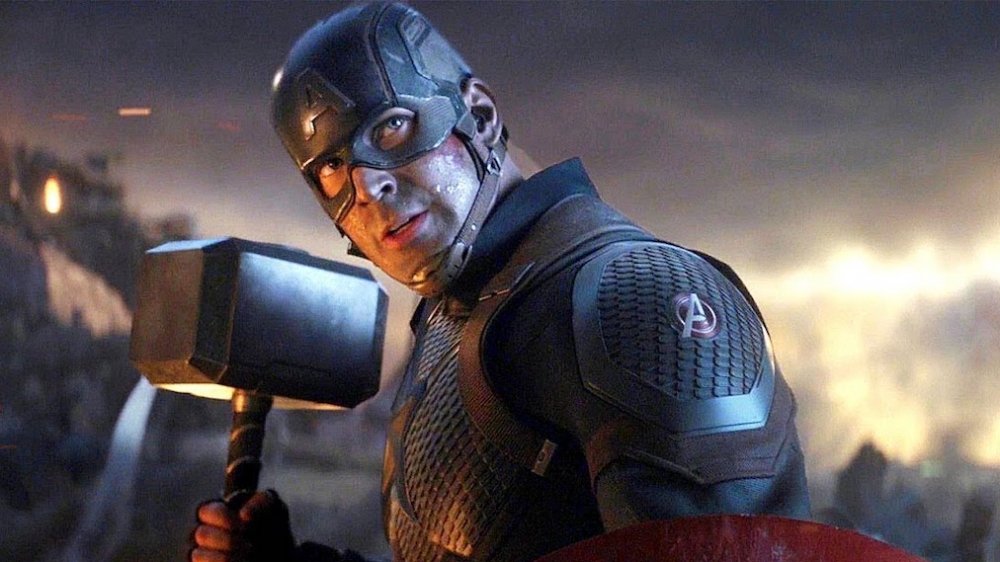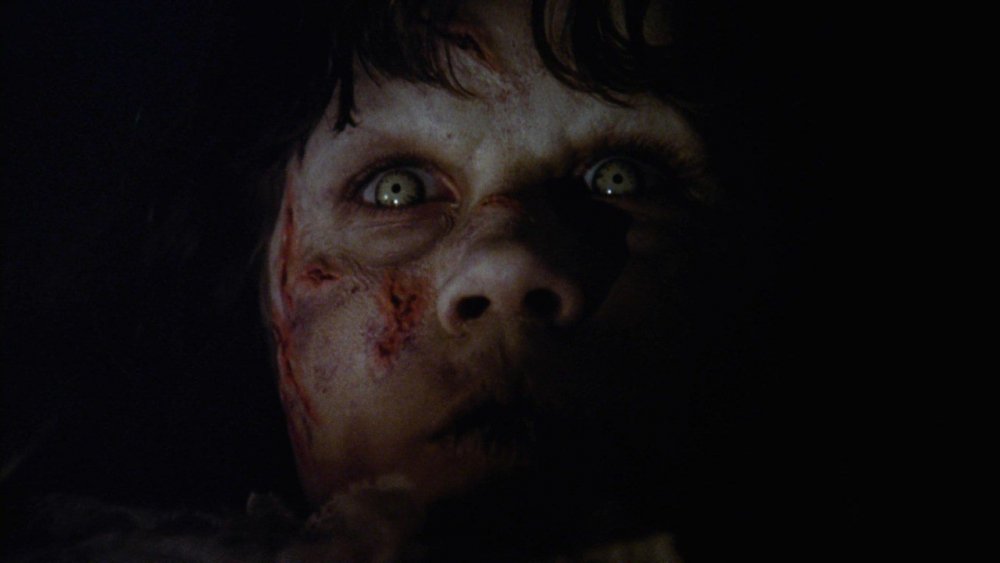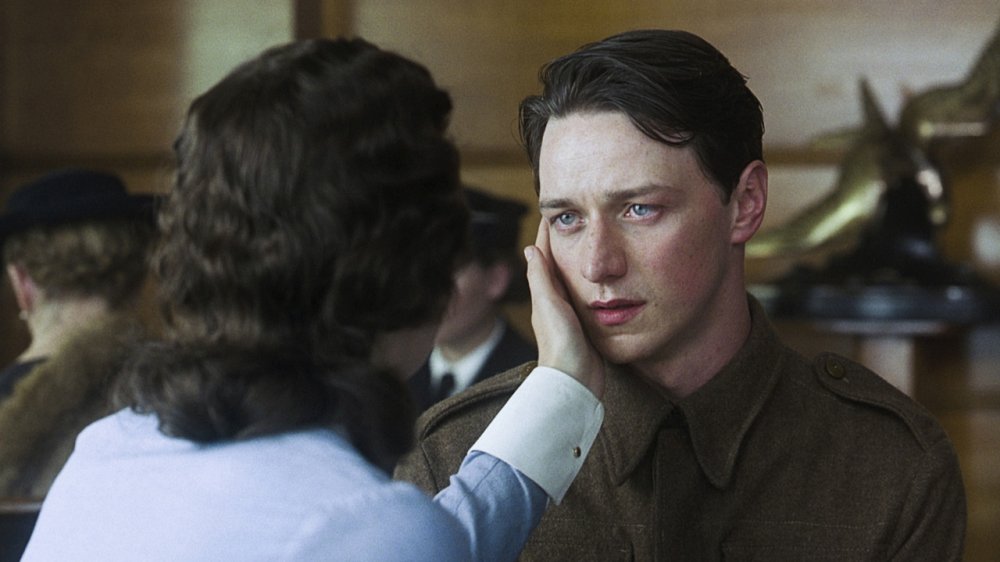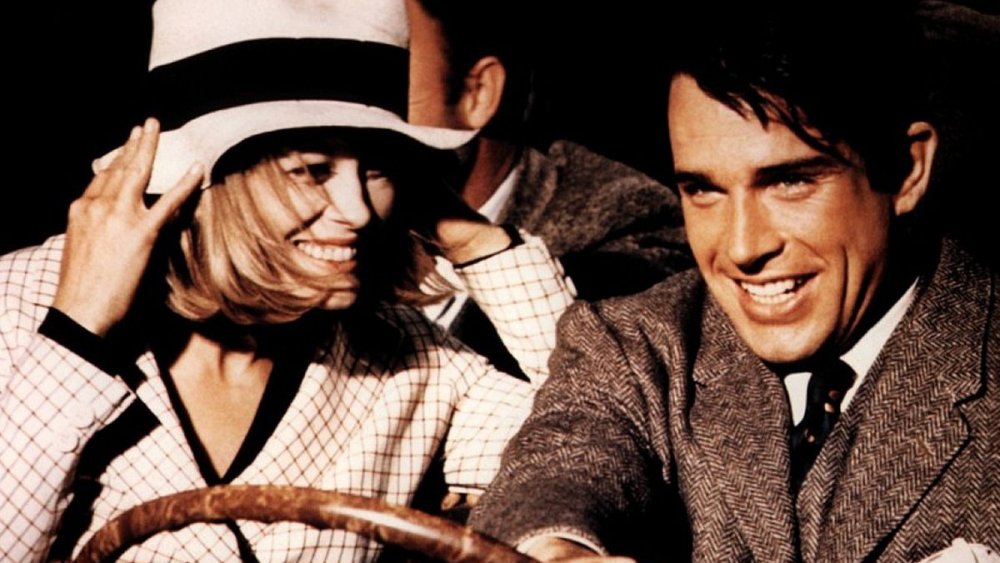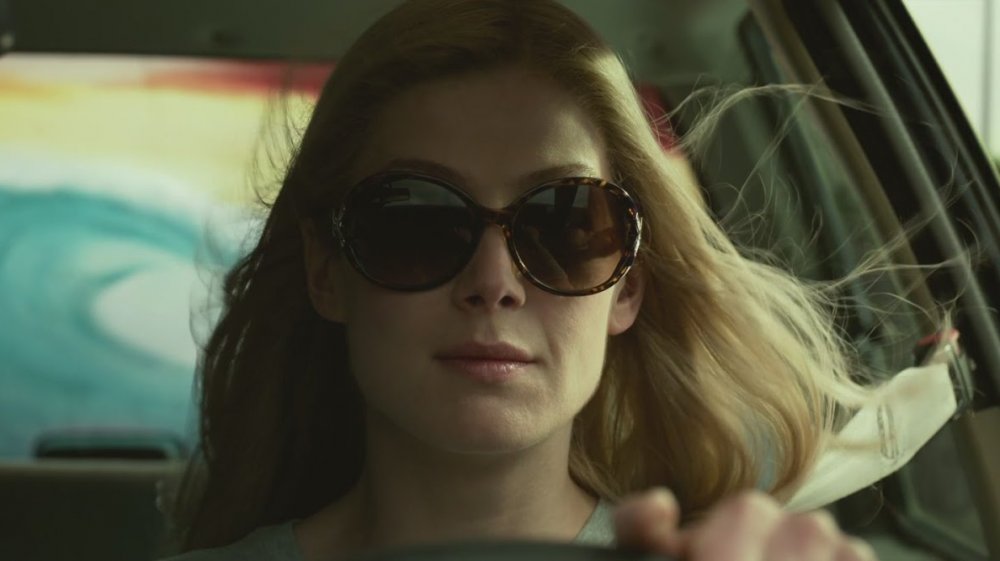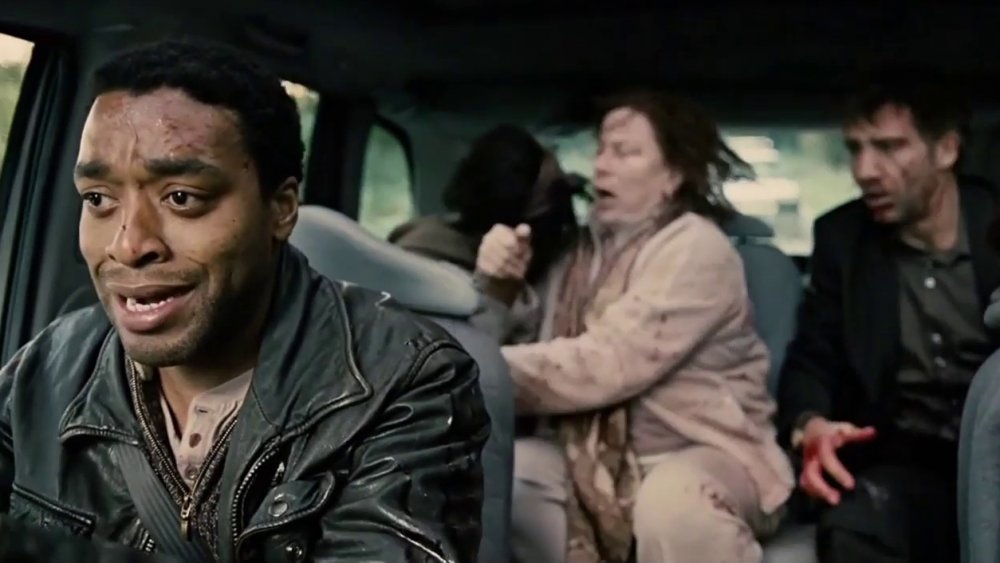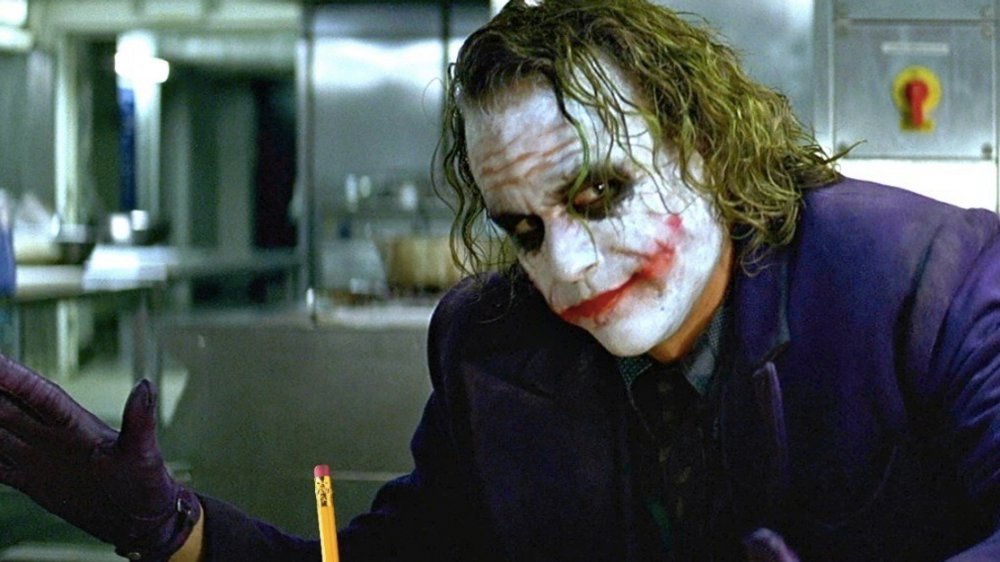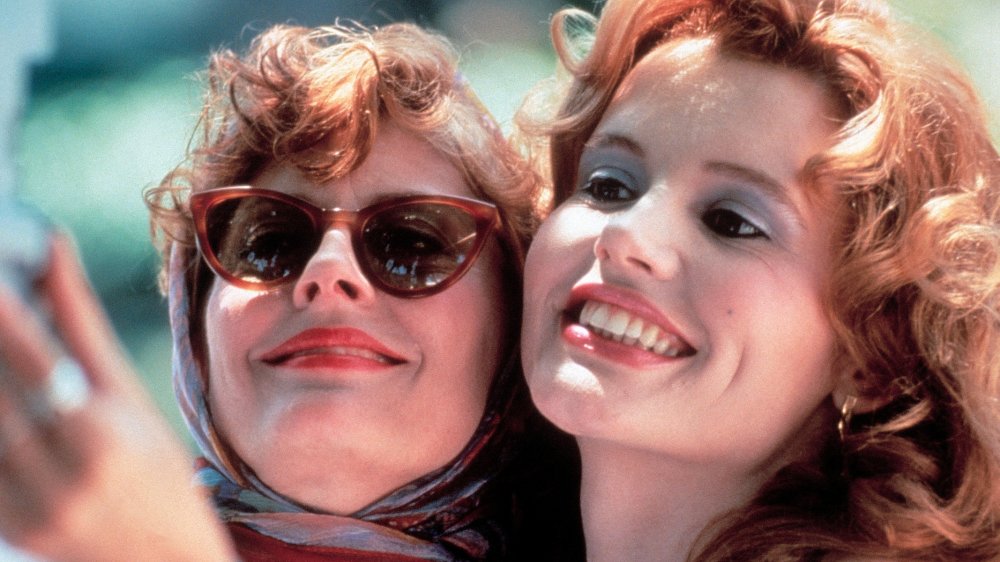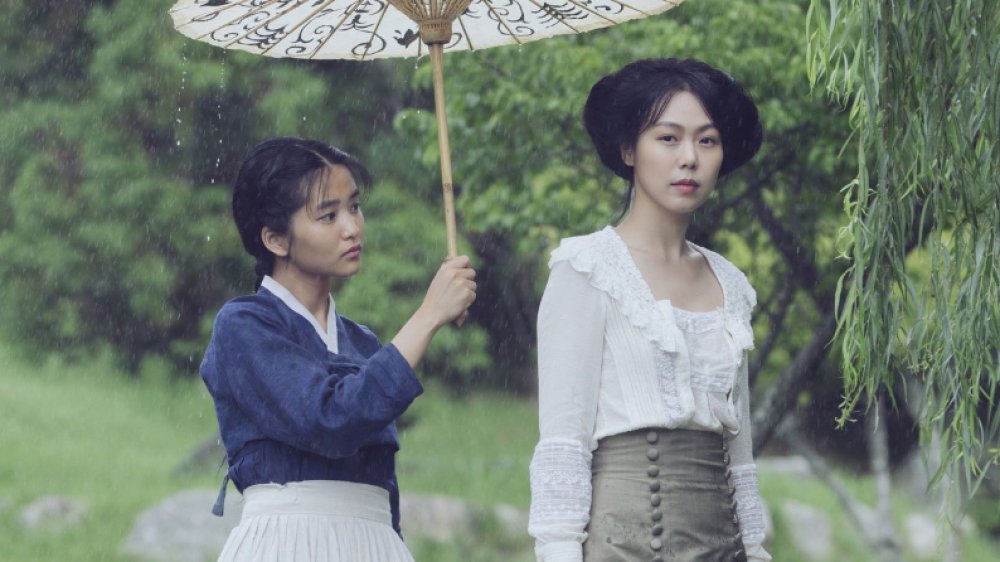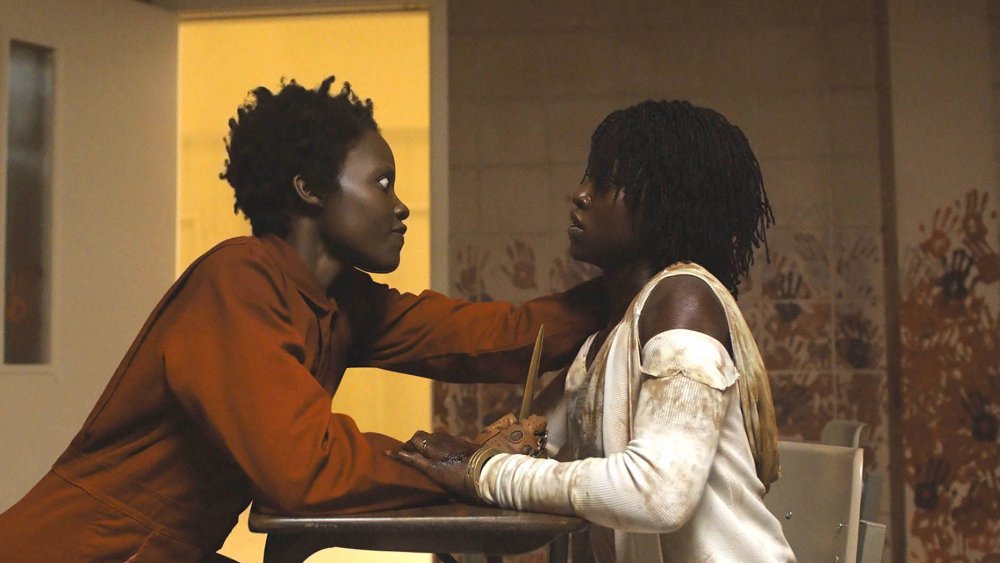Movie Moments That Made Audiences Gasp
We go to the movies for all sorts of reasons. Sometimes, it's to get swept up in another world, be it a grim dystopia or a wondrous fairyland. Sometimes, it's to watch people fall in love despite all obstacles. Sometimes, it's even to experience fear. A great movie, regardless of genre, style, or focus, will immerse the audience fully. Viewers will forget about the jittery child in the next row, the frigid air conditioning, and whatever lingers on their to-do list. All that will exist for them, in that magical moment, is the movie.
So, shocking the viewer with a gasp-worthy moment, scene, or line is one of the most impressive achievements in immersion a movie can attempt. After all, these are genre-savvy times. Critical phrases like "Manic Pixie Dream Girl" have become part of the vernacular, social media has turned everyone into a pundit, and entire, labyrinthine websites exist to collate the cliches of mass media. To manage to pull the rug out from under the audience in this era, then, is a particularly difficult feat. Yet filmmakers still manage to do just that — and we're here to celebrate them. These are the most jaw-dropping, eye-popping, OMG-worthy movie moments around, from triumphant reversals of fortune to startlingly bloody deaths.
(Be warned — major spoilers below.)
The shocking scene when Quint is devoured in Jaws
Jaws isn't scary "for its time," or "considering the effects they had then." Even today, when movies are able to animate every serration of every tooth of every CGI mega-shark, Jaws is still flat-out terrifying. The main theme alone sends chills up one's spine, to say nothing of the shark itself. There's something about the simplicity of the prop that actually makes it more terrifying nowadays. There's no computer gloss to obscure the sheer, primal terror of it.
This is never more fully on display than during Quint's death scene. By this point in the movie, things are looking grim for our heroes. Multiple attempts to slay the beast have failed. Quint has gone off the (literal and figurative) deep end and smashed their means of contacting the Coast Guard. The ship is half-sunk. Suddenly, the shark heaves itself onto the swamped deck of the boat. It's seen in full, every detail of its gaping maw sharp in the midday sun. Quint — survivor of the USS Indianapolis and shark-hunter for hire — stands no chance. He slides down the deck into the shark's mouth like any other human, powerless before the beast's might. It only takes one measly minute for him to go from ironclad sailor to chum, making his death scene simultaneously shocking and succinctly symbolic of the whole movie.
Audiences gasped when Captain America picked up Mjolnir in Avengers: Endgame
It's a testament to how utterly bonkers Avengers: Endgame's climax is that Captain America wielding Mjolnir, Thor's legendary hammer, serves as a sort of appetizer. This moment happens before the portals open and the cavalry arrives, before Captain Marvel descends from space like a vengeance-seeking comet, and before Tony Stark embraces Peter Parker, at a rare loss for words. The fact that this scene still stands, after all that mayhem and magic, as one of the most jaw-dropping moments of the entire movie, is a testament to its power.
In some ways, the MCU has been seeding this scene for years. When the Avengers try to lift Mjolnir in Age of Ultron, Cap does manage to jostle it, much to Thor's chagrin. And of course, of the original crew, he is the one who started out good-hearted, not requiring the humbling lessons Thor and Tony Stark needed before they became better people. But still, audiences around the world gasped, shrieked, and cheered as the hammer flew into Cap's hand. What follows is a ludicrously cool fight that weaves Cap's hand-to-hand combat skills, some truly insane hammer-shield combos, and outright lightning-summoning into an unforgettable moment. Thor speaks for us all when he mutters, grinning widely, "I knew it," and yet somehow, it still arrives as a fist-pumping surprise.
It's hard to watch Regan with that crucifix in The Exorcist
There's no shortage of shocking moments in The Exorcist. Consider the moment Regan, clad in her flowered nightgown amidst the glittering splendor of an adult party, tells an astronaut friend of her mother's that he's going "to die up there." It's a whole lot simpler than what happens later in the movie, but it's still plenty attention-grabbing. It's in that juxtaposition of a sweet little girl and the vulgar demon who possesses her that The Exorcist's power lies. Something about it is so deeply and intrinsically wrong that you just can't look away ... no matter how much you might want to.
This discomfort comes to a startling climax halfway through the film. Chris, Regan's mother, enters her daughter's room after hearing screams and clattering, and she discovers Regan jamming a bloody crucifix into her own groin. Chris attempts to subdue her daughter, but Regan is empowered by the demon within her. She forces her mother's face into her own ravaged flesh, hurls a wardrobe at her, and twists her entire head around to hurl a final shocking bout of profanity. The fact that it's shot in the afternoon enhances the impact of the scene. Regan's depravity happens in a sunny, well-appointed little girl's room, where every detail of her destruction can be glimpsed in full. It's disgusting, disquieting, and absolutely unforgettable.
When Briony reveals what actually happened to Robbie and Cecilia in Atonement
Atonement's story is a tangle of human frailty and class bias. Briony Tallis, a wealthy young girl, believes she's caught the housekeeper's son, Robbie, preying upon her older sister, Cecilia. But, being a child, she doesn't actually understand the scenes she has stumbled upon, nor her own sister's feelings, to say nothing of the crush she has on Robbie herself. Her testimony gets Robbie arrested, and what follows is a long, painful series of years in which Briony comes to understand the damage she did amidst the ravaged backdrop of World War II. Robbie and Cecilia are eventually reunited in London, but when Briony apologizes, they make it clear that she can't wipe away the mess she made with one tearful confession.
It's brutal ... and it's a fiction. As an elderly Briony — now a celebrated novelist — reveals at the movie's end, Robbie and Cecilia never reunited at all. Robbie, released from prison to fight in the British Army, died of sepsis at Dunkirk, while Cecilia died in the Blitz. In an effort to atone for her sins, Briony wrote them the happy ending they never actually got to have. This revelation is utterly gutting. Briony is clearly aware of how paltry her efforts are. There's no erasing the effects of her accusation, and she'll never be able to forget that, no matter how many loving reunions she imagines.
The end of the road arrives in Bonnie and Clyde
Released in 1967, Bonnie and Clyde is a landmark film, considered to be one of the first works of the "New Hollywood" era. Though the exact definition of this movement is subject to debate, Bonnie and Clyde encapsulates the broad strokes — an experimental (and notably choppy) approach to editing, an ambiguous take on morality, and a liberal attitude towards sex and violence. All of this is captured especially well in the film's ending, which sparked a major debate with only two minutes of screen time.
Bonnie and Clyde — who've spent most of the movie embodying every '60s ideal of beautiful, counterculture youth — are lured into stopping by the side of the road to help the father of a friend, who's apparently struggling with a flat tire. What they don't know is that this man is in cahoots with the police. A frantic sequence ensues, made all the intense by multiple quick cuts. The man hits the deck, Bonnie and Clyde look at each other worriedly, Bonnie's face softens with love, and the police open fire. They riddle Bonnie, Clyde, and their car with bullets, long past the point of death. This sequence is deliberately abrupt, violent, and frenetically pieced together, choices that made the movie a classic and, at the time, majorly controversial. Though this level of violence is nothing compared to what modern movies pull off, the scene remains shockingly abrupt and all the more uniquely potent for it.
Audiences gasped when Amy Dunne revealed her plan in Gone Girl
In Gone Girl, Nick Dunne's beautiful, pregnant wife, Amy, has gone missing ... and left behind a diary detailing his escalating anger. Damning evidence mounts, from the girl Nick's been cheating with to Amy's bumped-up life insurance policy. Nick pleads his innocence, but few buy it. He is, after all, the sort of man who reacts to stagnation by cheating on his wife with one of his undergrads. And as every true crime fan knows, the husband usually did it.
Then suddenly, midway through the movie, Amy's voice — cool, refined, and utterly at ease — rolls in like thunder. "I'm so much happier now that I'm dead." A devastatingly good scene unfolds, in which Amy narrates exactly how she's framed Nick Dunne for her murder and how glad she is to have done it. Part of this scene has become known as the "Cool Girl" monologue, for Amy's description of playing the "Cool Girl" for Nick at their relationship's beginning. She endured Adam Sandler movies and remained a size two, never got angry, and ripped out her body hair, all for him to take her money, drag her away from her home, and cheat on her with his student. Now she's playing a new role — tragic, pregnant, terrified Amy, victim of her husband's rage. She might be describing her command of Nick's fate in this scene, but it pales in comparison to her complete command of the audience's attention.
When the car is ambushed in Children of Men
Children of Men examines a world in pieces. Close to 20 years of complete global infertility have passed, and the UK is one of the few functioning nations around, which isn't saying much, as "functioning" encompasses "executing immigrants." Theo, a cynical paper-pusher, is one of many living through the world's last, crumbling days, until his estranged wife Julian, a militant activist, pulls him back into the struggle for the future. As it turns out, Kee, a young asylum seeker, needs safe passage conducted under the utmost secrecy ... because she's pregnant.
Things explode during one utterly mind-blowing sequence, filmed in a single, four-minute take. Theo, Kee, a midwife, Julian, and one of her associates are traveling near Canterbury when their car is ambushed. A burning vehicle cuts off their exit, armed gang members pour from the woods on either side of the road, and a pair on a motorcycle shoot Julian dead. The calm before the storm, in which Julian and Theo flirt, the sudden, startling ambush, the panic of the car's inhabitants, and their desperate attempts to escape all unfold without the respite of a single cut. It's a scene that consumes you. You'll only realize you were holding your breath, clenching every muscle, or gritting your teeth after it's over. On an emotional level, it's a masterpiece. On a technical level, it's breathtaking. And on the sheer, primal level of gasp-inducement, it's entirely off the charts.
The Joker makes a pencil disappear in The Dark Knight
It's hard to pick just one Joker moment from The Dark Knight to examine. They're all macabre, complex, and uncomfortably hilarious. But if there's one that serves as symbol of the murderous clown's modus operandi, it's got to be his infamous magic trick.
The Joker has already been introduced at this point in the movie. He's robbed a bank, revealed his scarred face, and sown a few seeds of disorder. But when he sweeps into a meeting of Gotham's criminal bosses like he isn't a stranger with a face full of flaking makeup, he alters the atmosphere entirely. Everything about him is at odds with his environment. He has no crew, he's visibly grimy, and he mocks the assembled gangsters with flat derision. But all of that is prelude to the moment he proposes a magic trick ... and slams a gangster's face down onto a stood-up pencil, burying the instrument in his head.
Before and after this moment, he's all odd swagger and ease, even when he shows off the grenades he has pinned to the lining of his coat. This abrupt moment of violence (and pitch-black comedy) stands alone. At once, it makes the viewer sit up and take notice, communicates the Joker's strange blend of humor and ruthlessness, and gets him in league with the criminal underground. The scene is the entire character in miniature — sly, silly, and savage.
The duo decide to keep going in Thelma and Louise
Thelma and Louise start out as two best friends on vacation, and they end up as fugitives from the law. To their surprise, they find the criminal life quite liberating. As Thelma, a sweet-natured housewife, puts it, "Something's like, crossed over in me ... and I can't go back." They've had a taste of freedom, dignity, and justice — a taste they know they'll never be able to forget.
But of course, the law isn't terribly interested in the emotional ramifications of their journey. The end of the movie arrives in a blaze of police sirens, as the authorities corner the pair on the lip of the Grand Canyon. Our heroines are hopelessly outgunned, and they know they're headed for life in prison, at best. And so Thelma suggests they "keep going." Louise asks if she's certain, and Thelma nods. The two kiss, clasp hands, and speed off the edge of the cliff. The last we see of the pair is their car, mid-flight. It's not the ending anyone foresaw (least of all Thelma and Louise themselves), but for all the shocked discussion it caused at the time of the movie's release, it is, in truth, a happy ending. Thelma and Louise find freedom and realize they aren't interested in living without it. It's bittersweet to be sure, but it's also a moment of total control over lives defined by the lack of it.
When Hideko double-crosses Sook-hee in The Handmaiden
Nothing is as it first appears in the incredible South Korean film The Handmaiden. Sook-hee, a pickpocket living in Japanese-occupied Korea, embodies this. She and a con man agree to swindle Lady Hideko, a Japanese heiress, by posing as a maid and a suitor, respectively. Once Hideko marries the con man, he and Sook-hee plan to commit her to an asylum and run off with her inheritance. But when the moment comes, Sook-hee is the woman dragged into the asylum. As she insists that she's just a maid, Hideko laments, "My poor lady, she's gone nutty."
By the film's end, viewers learn that Hideko and Sook-hee are actually in on a private con in this scene. But the eye-popping nature of this moment cannot be overstated. The Handmaiden lures you into thinking it's telling a story about women in straitened circumstances, torn between riches and love. Hideko appears to be Sook-hee's redemption, a vision of unspoiled loveliness she can't help but adore ... until Hideko is revealed to be, in Sook-hee's own words, "a rotten b***h." They are, in the end, too big for such narrow portraits. They're both rotten, kind, loving, and venal by the film's end. But before every aspect of their complex coupling has been examined, there's the movie's mind-blowing midpoint, making it clear that no one in The Handmaiden can be understood at first — or second or even third — glance.
Audiences gasped after learning the truth in Us
Us' power lies in its unforgettable use of contrast. Sunny boardwalks sit atop grisly tunnels, a family's summer vacation descends into horrific bloodshed, and bright-eyed children stand beside their mute Tethered counterparts. At the center of it all stands Adelaide, a beautiful, talented wife and mother, and Red, her sinister doppelganger. Adelaide soared as a young ballet dancer, enjoyed the love and attention of her parents, and fell in love with "a handsome prince," while Red lived underground, helplessly forced into a cruel parody of Adelaide's life. And she's had enough. After years of organizing the other Tethered, she leads them to the surface, where they will take what they have been denied by force.
After a while, you think you have Us figured out. But then, right before the credits roll, it flips the script entirely. Adelaide, it's revealed, stumbled into the Tethered's world as a child, where her doppelganger choked her unconscious, chained her up, stole her T-shirt, and escaped topside to take her place. Terrifying, vengeful Red was once little Adelaide, and the poised mother we've been following for the entire movie began as a pitiful Tethered child, condemned to life underground. The twist's implications are fascinating, and it takes the film's commentary to an even more complex place, but before any of that, it's straight-up jaw-dropping.
